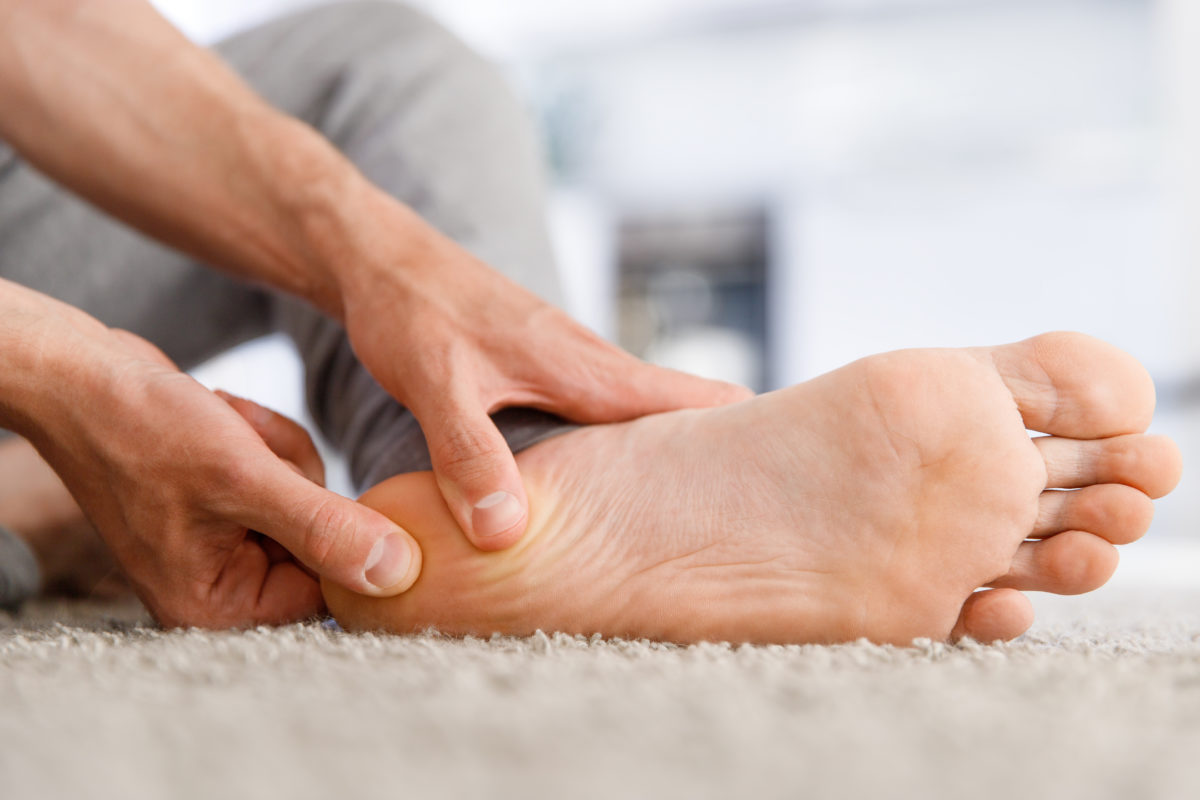So you’ve visited the doctor, and they’ve told you that the pain that you’re experiencing in your heels is due to plantar fasciitis. They explain that too much stress is placed on the plantar fascia ligament, causing inflammation and tiny tissue tears and they are recommending plantar fasciitis therapy.
The doctor suggests that to relieve some of the pain and tension that comes with plantar fasciitis, you need to perform daily stretches and exercises. So, where do you start? Here are two easy yet effective exercises that can alleviate some of the symptoms related to plantar fasciitis.
Tennis Ball Exercise
For this exercise, you’ll need a tennis ball or a ball of similar size. If you don’t have one lying around the house, you can use another cylindrical object like a rolling pin or metal water bottle.
To perform this exercise:
- Sit in a chair, placing the ball (or whichever object you’re using) on the ground in front of you.
- Center the ball under your foot, and roll it along the arch of your foot. You should be able to feel a deep stretch in the plantar fascia ligament.
- For maximum results, repeat this exercise two to three times a day for five minutes at a time.
The UMHS (University of Michigan Health System) suggests that the best times to perform these stretches are first thing in the morning, right after you wake up. Doing so relieves some of the tension that has built up from a night of inactivity.
The Wall/Step Stretch
This wall/step stretch targets not only your plantar fascia ligament but also your hamstrings and the muscles in your calves, making it an excellent exercise for overall leg tension. You can perform this exercise in two ways: against a wall or using a step.
The step method allows you to stretch both feet at the same time. First, stand with the balls of your feet on the first step of a set of stairs. Stand up tall on your toes and then gradually allow your heels to drop down until your hamstrings are taut, and you can feel a stretch in the arches of your feet. To get the most out of this stretch, repeat this motion for at least a minute three to four times a day.
The wall version of this stretch works the same way as the stair method, except it targets each foot individually. Begin by facing a wall and placing your toes against it while resting your heel on the ground. Using your other foot to balance, slowly lean toward the wall until you feel your plantar fascia ligament extending. Hold this position for 30 seconds, and then repeat the stretch with the other leg. When performing this stretch, you may find it more comfortable to wear shoes, as it provides an extra bit of comfort and balance.
Make Your Exercises More Effective
While performing these exercises will certainly help lessen the pain of your plantar fasciitis, you can take a few extra steps to accelerate the process.
In many cases, the pain from plantar fasciitis is partially the result of swelling. You may be able to find longer-lasting relief by applying ice to your feet and taking an anti-inflammatory such as ibuprofen between your daily exercises.
If your pain continues or worsens, contact a podiatrist who specializes in plantar fasciitis therapy.

